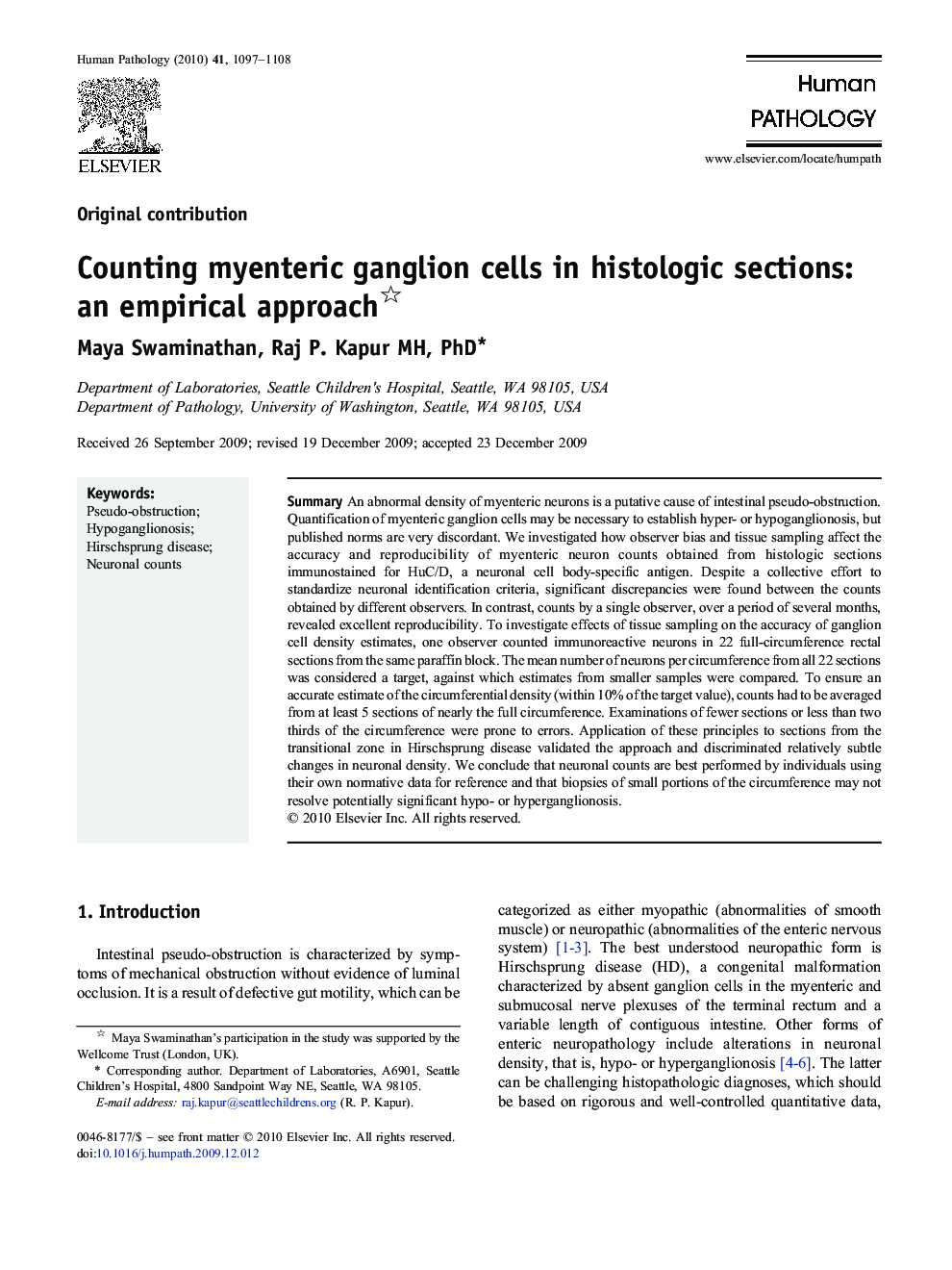| Article ID | Journal | Published Year | Pages | File Type |
|---|---|---|---|---|
| 4134354 | Human Pathology | 2010 | 12 Pages |
SummaryAn abnormal density of myenteric neurons is a putative cause of intestinal pseudo-obstruction. Quantification of myenteric ganglion cells may be necessary to establish hyper- or hypoganglionosis, but published norms are very discordant. We investigated how observer bias and tissue sampling affect the accuracy and reproducibility of myenteric neuron counts obtained from histologic sections immunostained for HuC/D, a neuronal cell body-specific antigen. Despite a collective effort to standardize neuronal identification criteria, significant discrepancies were found between the counts obtained by different observers. In contrast, counts by a single observer, over a period of several months, revealed excellent reproducibility. To investigate effects of tissue sampling on the accuracy of ganglion cell density estimates, one observer counted immunoreactive neurons in 22 full-circumference rectal sections from the same paraffin block. The mean number of neurons per circumference from all 22 sections was considered a target, against which estimates from smaller samples were compared. To ensure an accurate estimate of the circumferential density (within 10% of the target value), counts had to be averaged from at least 5 sections of nearly the full circumference. Examinations of fewer sections or less than two thirds of the circumference were prone to errors. Application of these principles to sections from the transitional zone in Hirschsprung disease validated the approach and discriminated relatively subtle changes in neuronal density. We conclude that neuronal counts are best performed by individuals using their own normative data for reference and that biopsies of small portions of the circumference may not resolve potentially significant hypo- or hyperganglionosis.
